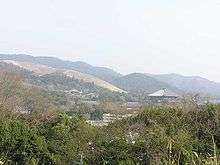Matsunaga Hisahide


Matsunaga Hisahide (松永 久秀 1508 – November 19, 1577) was a daimyō of Japan following the Sengoku period of the 16th century.
Biography
He was a retainer of Miyoshi Nagayoshi from the 1540s. He directed the conquest of the province of Yamato in the 1560s and by 1564 had built a sufficient power-base to be effectively independent. It is believed that he was conspiring against Nagayoshi during this period, from 1561 to 1563 three of Nagayoshi's brothers and his son Yoshioki died. This left Miyoshi Yoshitsugu the adopted heir when Nagayoshi died in 1564, too young to rule. Three men shared his guardianship – Miyoshi Nagayuki, Miyoshi Masayasu, and Iwanari Tomomichi.
He then invested the shogun Ashikaga Yoshiteru's palace, who then committed suicide.[1]
His brother Ashikaga Yoshiaki fled and the shogun was replaced by his young cousin, Yoshihide.
In 1566, fighting started between Hisahide and the Miyoshi. Initially the forces of Hisahide were unsuccessful and his apparent destruction of the Buddhist Tōdai-ji in Nara was considered an act of infamy.
In 1568 Oda Nobunaga, with the figurehead Yoshiaki, attacked Hisahide. Nobunaga captured Kyoto in November and Hisahide was forced to submit.[1]
Yoshiaki was made shogun, a post he held only until 1573 when he attempted to remove himself from Nobunaga's power. Hisahide kept control of the Yamato and served Nobunaga in his extended campaigns against the Miyoshi and others, for a while. In 1573 Hisahide briefly allied with the Miyoshi, but when the hope for successes were not achieved he returned to Nobunaga to fight the Miyoshi.
In 1577 Nobunaga besieged him at Shigisan Castle. Defeated but defiant Hisahide committed suicide. A noted tea master, he destroyed his tea bowl denying it to his enemies.[1]
He ordered his head destroyed to prevent it becoming a trophy (in which his son, Matsunaga Kojiro grabbed Hisahide's head and jumped off the castle wall with his sword through his throat). His son, Hisamichi, also committed suicide in siege.
Hisahide often appears as a shriveled and scheming old man in fiction. However, this is a fictitious image propagated in response to the assassinations and the destruction of Tōdai-ji that he was believed to have perpetrated. In truth, he was a tall, handsome, and educated man as well as a patron of arts.
Cultural references
See People of the Sengoku period in popular culture.